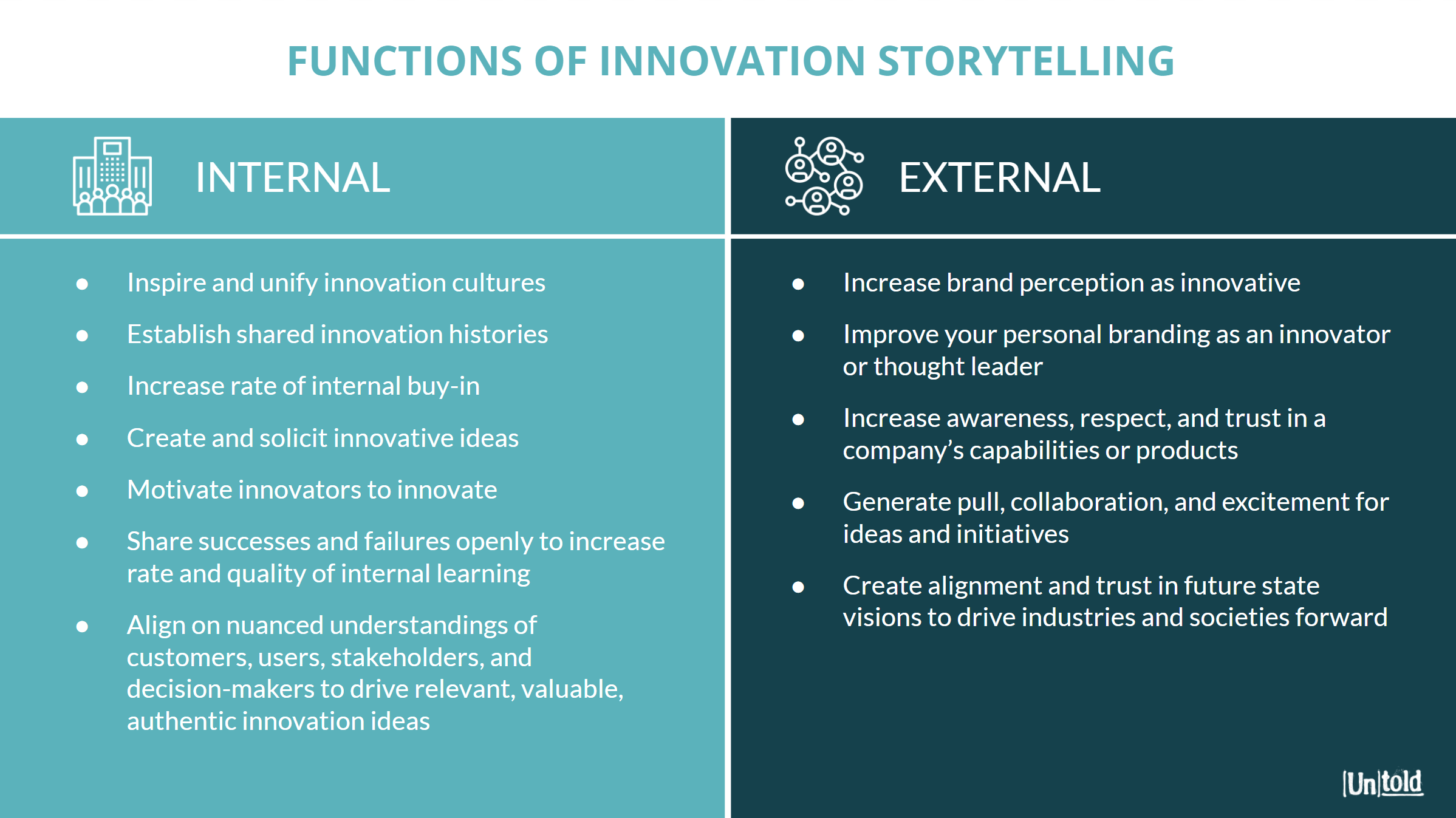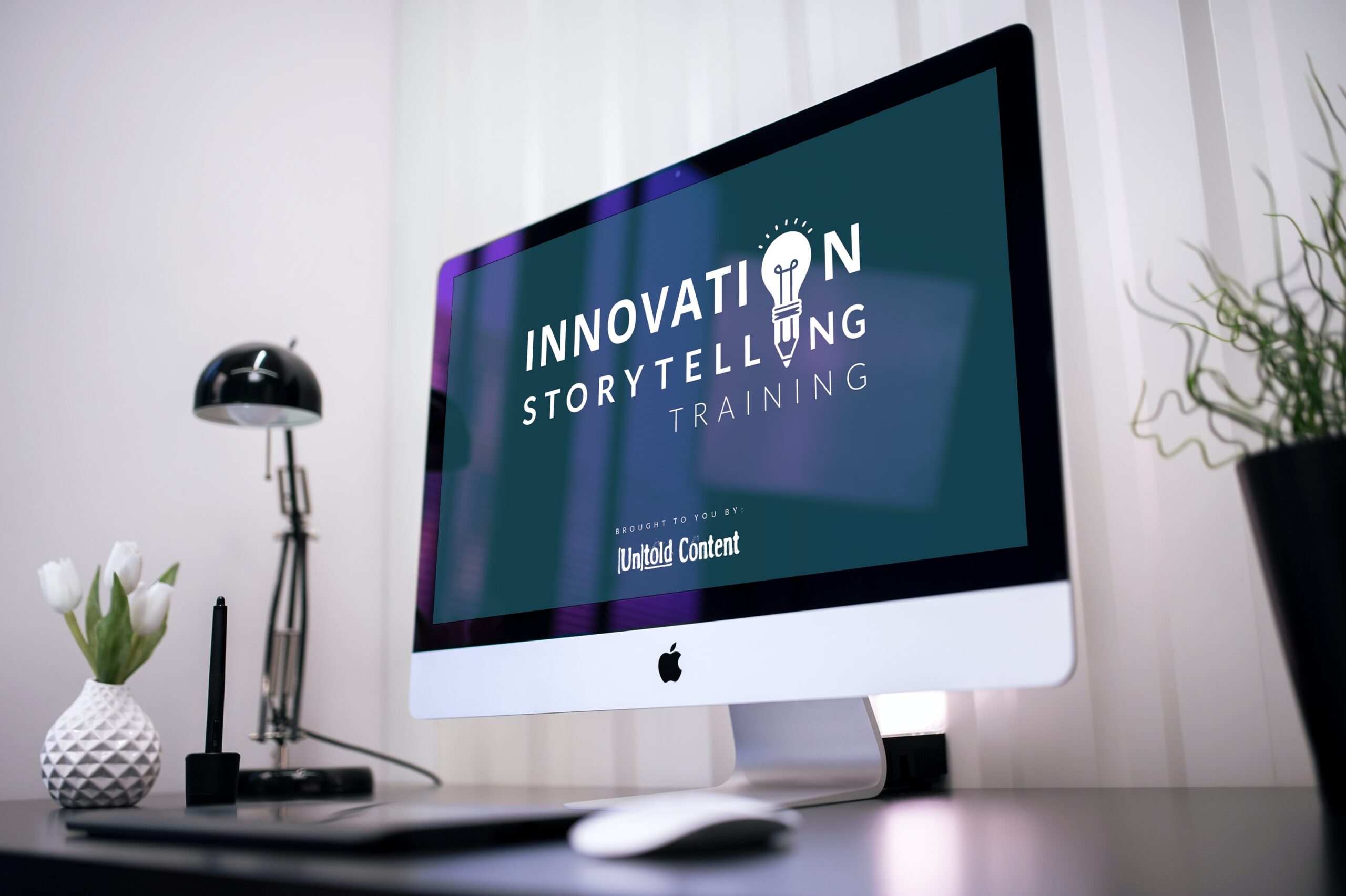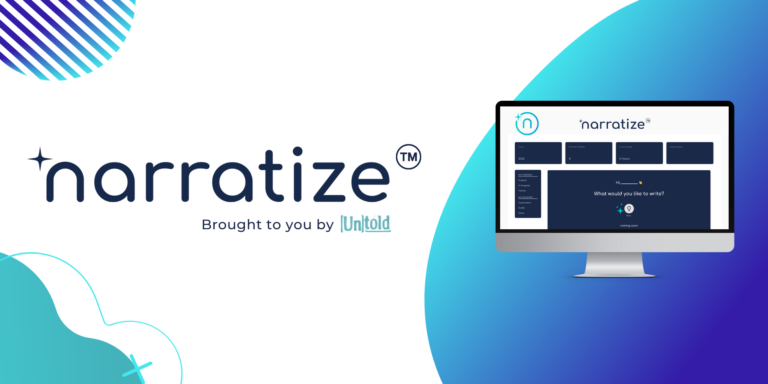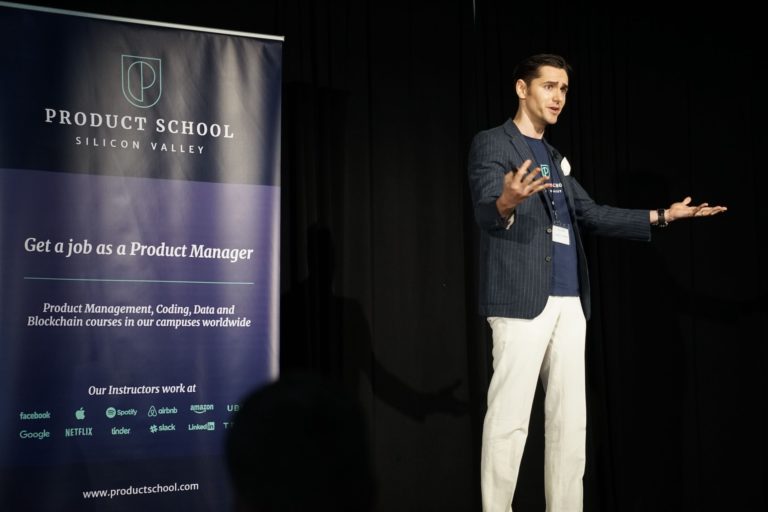Blog >> How Innovative Organizations Craft Strategic Innovation Narratives and Amplify Personal Stories of Innovation
How Innovative Organizations Craft Strategic Innovation Narratives and Amplify Personal Stories of Innovation
What is Innovation Storytelling?
Innovation Storytelling (noun): the art and science of communicating strategic narratives and personal experiences around product developments, systems improvements, and ground-breaking thinking to drive innovation objectives.
When we say “innovation storytelling,” we’re referring to both personal innovation stories and strategic innovation narratives. But it is important to distinguish between the two so you can understand how to bring them together to effectively accomplish your innovation objectives. So here is our take.
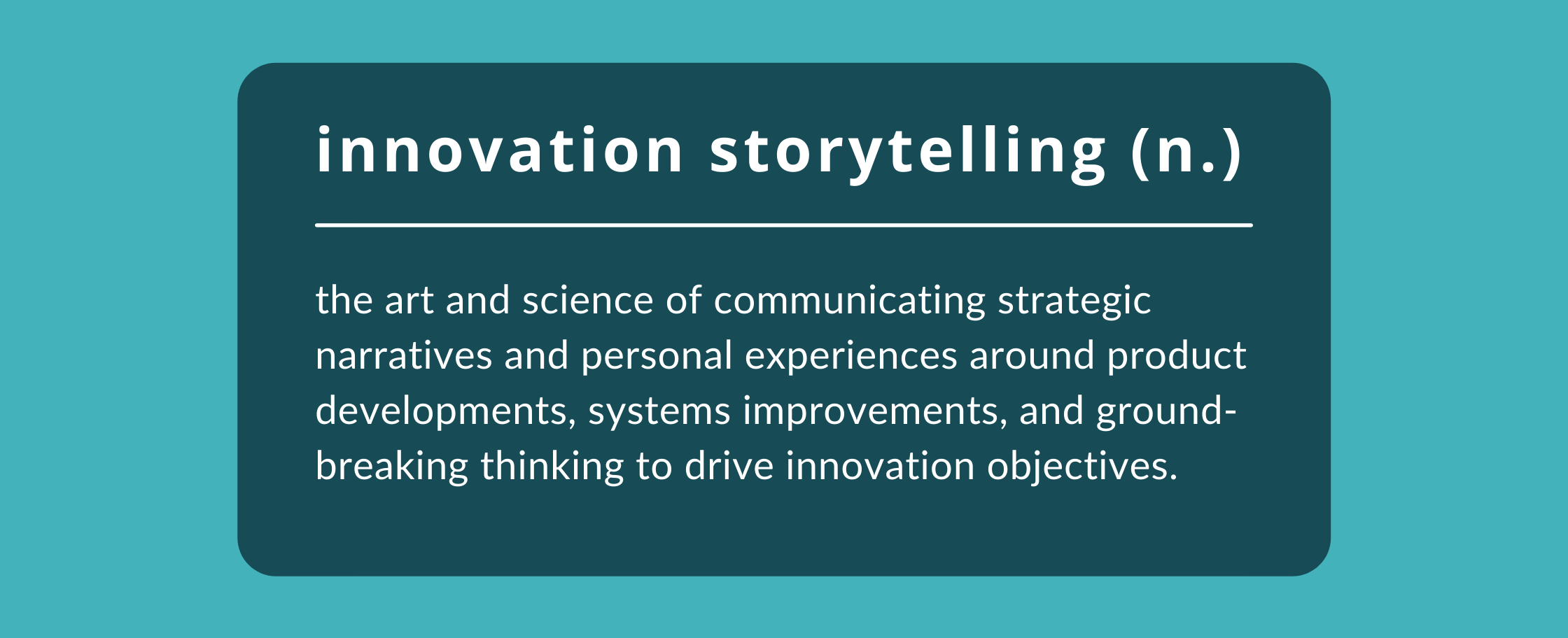
What are Strategic Innovation Narratives?
In its simplest form, a narrative is constructed with a specific intention or to accomplish a specific task. Strategic narratives are used to create alignment and communicate results; they have a focused objective to share a company’s vision and path forward. Because narratives are goal-oriented, they are often performative and lack the personal accounts that you hear in a traditional (personal) story. When an organization shares its view on innovation and its role within the innovation ecosystem, they’re communicating a strategic narrative. When a person is pitching a new idea or a new startup, that’s also a strategic narrative. Narratives create constructs that align people and organizations—and frankly, get shit done!
What are Personal Innovation Stories?
A personal innovation story is a first-hand account of an event from an individual innovator’s perspective. Stories are more closed-off than narratives; they have a beginning, middle, and end. And, once characters are developed and conflicts are resolved, stories are more or less over. These personal accounts can be short and fragmented, and lack the objective focus and intent of a narrative. Instead of creating alignment through a focused objective, stories create alignment through shared experiences and empathy. These shared experiences help create a unified history and culture of innovation and can help unify an organization.
How Do Personal Stories and Strategic Narratives Support Innovation?
Engineers, coders, scientists and all the myriad innovators in your organization tell themselves personal stories of innovation everyday. Stories about the lessons they learned after a project failed. Stories about that team member who saw something no one else did, and how it helped them see the problem in a new light. Stories depicting behaviors, outcomes, observations, and beliefs. Have you ever been moved by someone’s account of their breakthrough moment after years of struggle? Stories engage our senses and our emotions. All of those individual stories get passed up and throughout the organization. They’re collected, and reshared in similar ways with similar morals and embedded values by different team members over time.
In most cases, Innovation stories are bottom-up whereas narratives are top-down. Every innovative organization should have a documented Innovation Narrative that is built collaboratively with employees and stakeholders across the enterprise and updated on a regular basis—whether quarterly, annually, or biannually.
An enterprise-level, this Innovation Narrative serves as a rallying cry and north star for an organization looking to undergo transformation. It inspires all employees, collaborators, and customers with clear, aspirational messaging about your mission, vision, and values specifically with regard to innovation and growth.
Take, for instance, Nike’s “Maker’s Unite” campaign. This is a strategic innovation narrative—a creative expression of the company’s values and beliefs about innovation. It’s a rallying cry. And the perfect example depicting the relationship between narrative and story. Because when innovators experience this campaign, they are immediately inspired to see themselves within the innovation culture it portrays. Hands dirty. Mind psychologically safe. Professional self ready to lean into bold ideas. Imagine the personal innovation stories inspired by this strategic innovation narrative.
Strategic Narratives plus Personal Stories Equals Good Storytelling
We describe the differences and the ultimate relationship between narrative and story here because in the world of innovation, it all leads to what we consider effective innovation storytelling.
When that innovation leader reports out of a project that has been years in the making and they describe, in great detail, a specific problem that their team solved, they are infusing their personal stories into their innovation narrative—inspiring a culture of innovation storytelling. When the VP works to align their organization with a movement and they bring in external voices from the broader ecosystem, they are practicing innovation storytelling.
Storytelling Touches Every Aspect of Innovation
Now that we’ve covered what it is, let’s explore where innovation storytelling emerges in the innovation process and the functions it serves—both internally and externally.
Let’s start internally. Inside of an organization, innovation storytelling can be leveraged to:
- Inspire and unify innovation cultures
- Establish shared innovation histories
- Increase rate of internal buy-in and championship
- Create and solicit innovative ideas
- Motivate innovators to innovate
- Share successes and failures openly to increase rate and quality of internal learning
- Align on shared, nuanced understandings of customers, users, stakeholders, and decision-makers to drive relevant, valuable, authentic innovation ideas
Externally, innovation storytelling can be leveraged to:
- Increase brand perception as innovative
- Improve your personal branding as an innovator or industry/thought leader
- Increase awareness, respect, and trust in a company’s capabilities or products
- Generate pull, collaboration, and excitement for ideas and initiatives
- Create alignment and trust in future state visions to drive industries and societies forward
Certainly this is not an exhaustive list, but what we hope is clear is that story touches nearly every aspect of innovation. It plays a role in ideation and futuring. It’s critical to gaining buy-in. It facilitates more rapid learning and (hopefully) avoidance of repeat failures. It’s the mechanism by which a brand builds the perception that it is, in fact, innovative and worthy of customers’ trust. From R&D and innovation to marketing and human resources, effective storytelling is a key skill for highly innovative organizations.
Learn about the training helping Fortune 1000 organizations accelerate innovation through the power of story.

